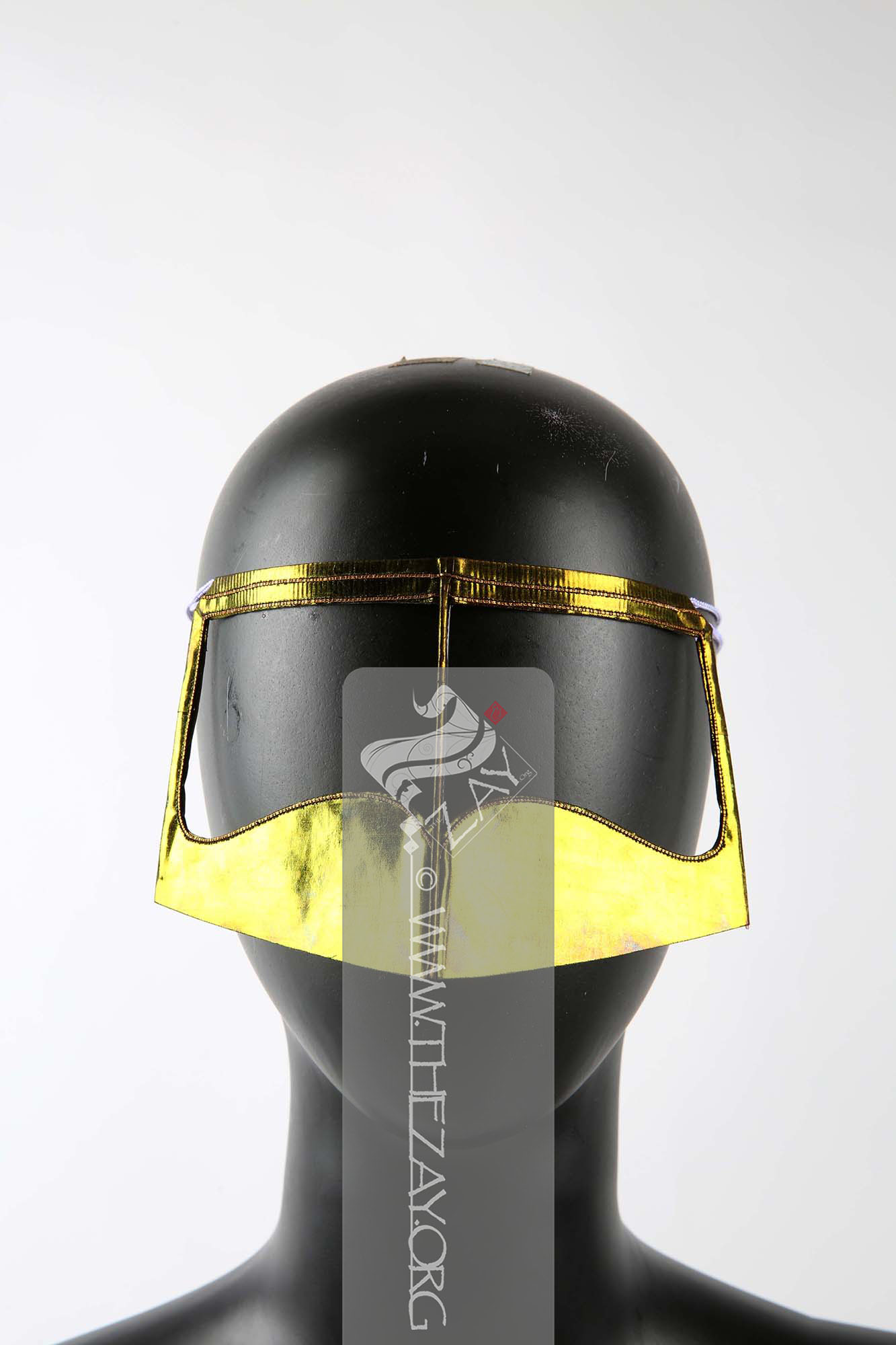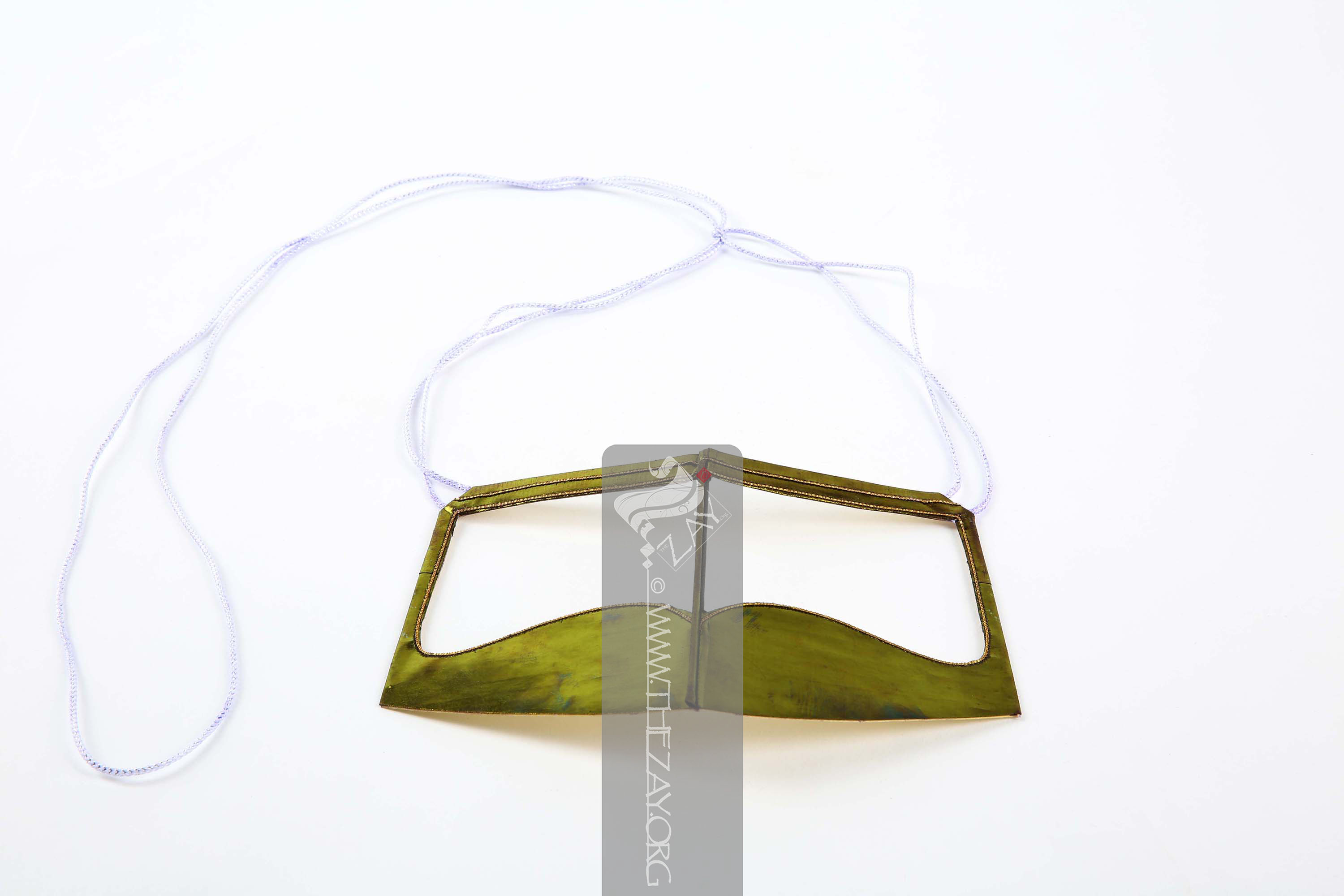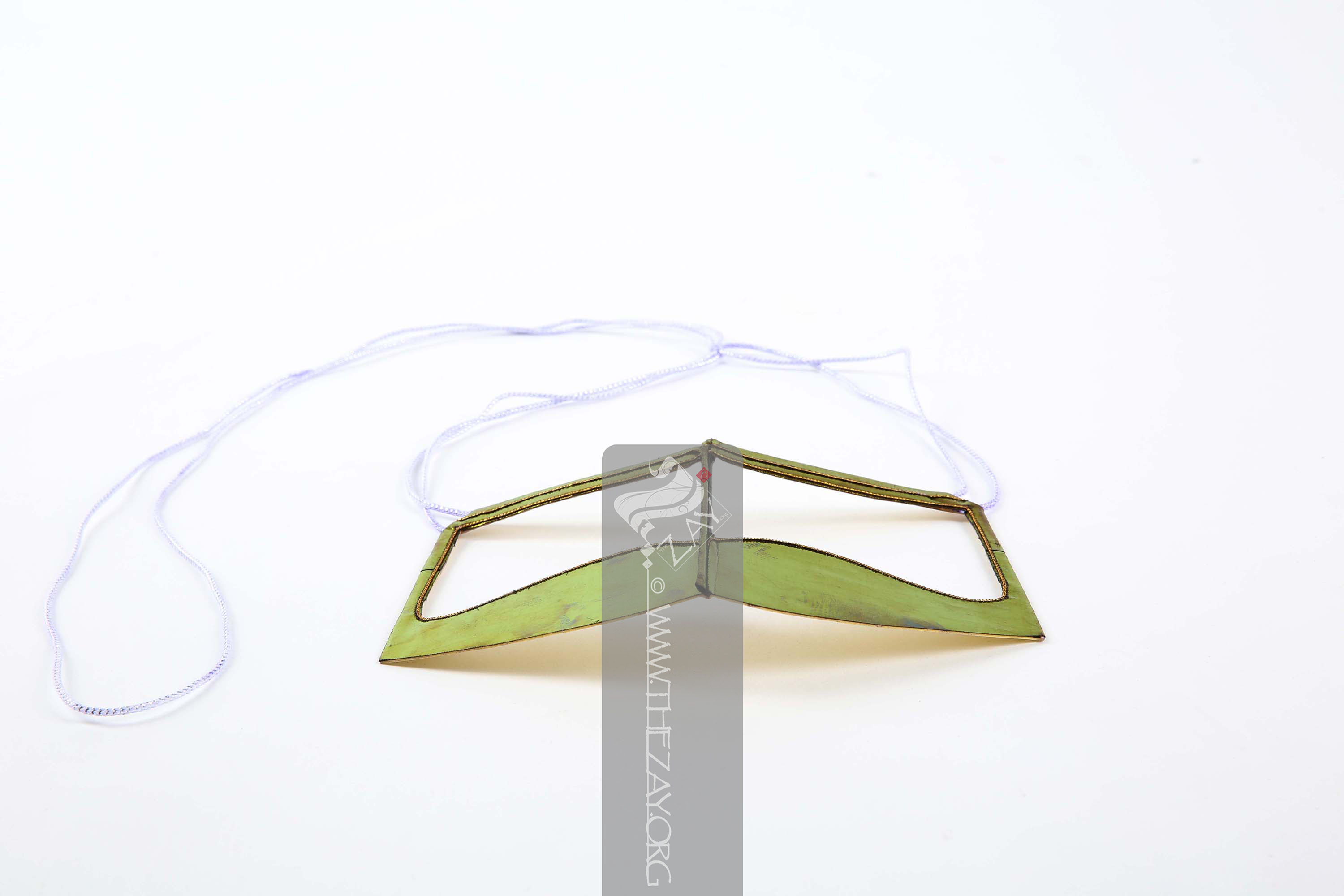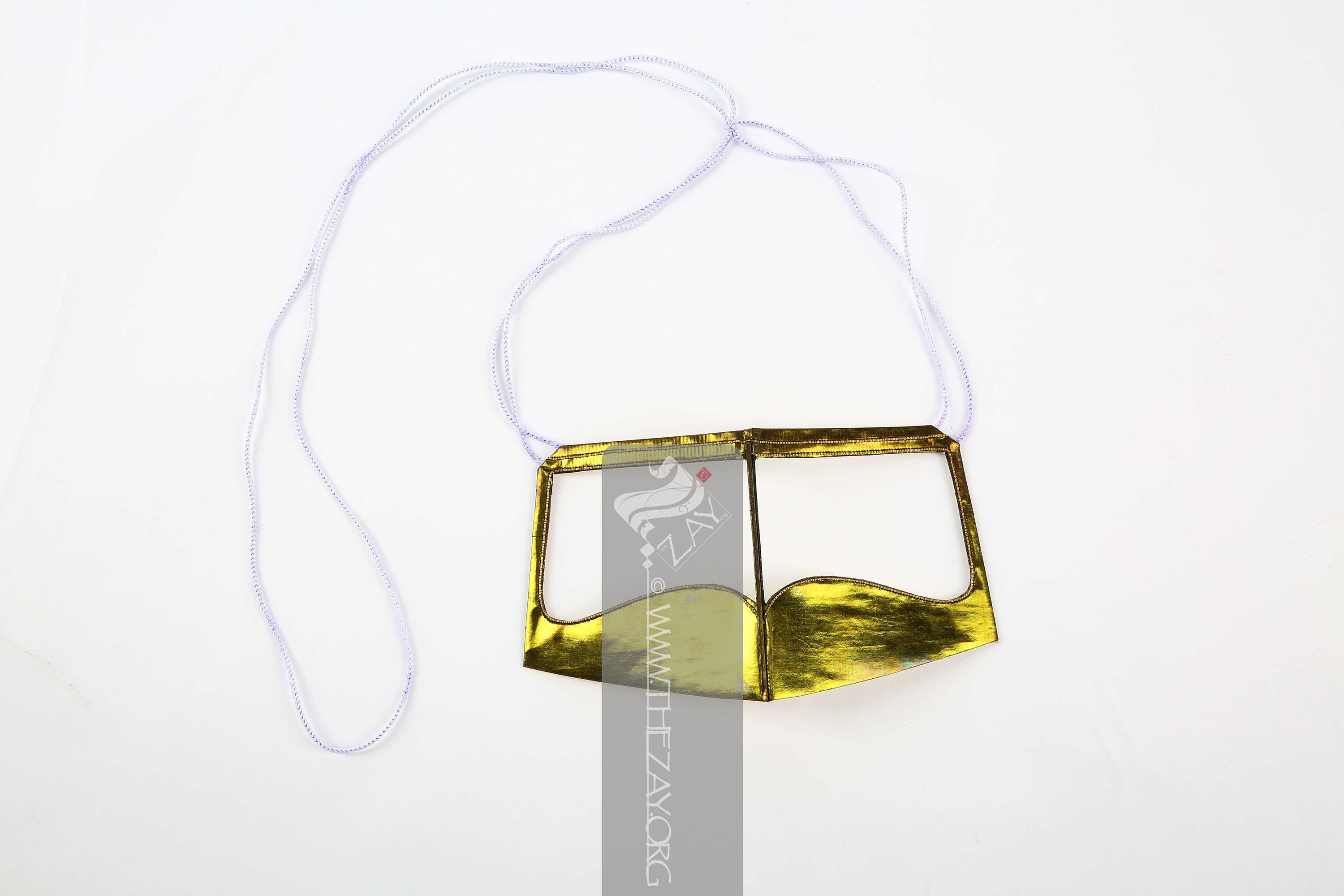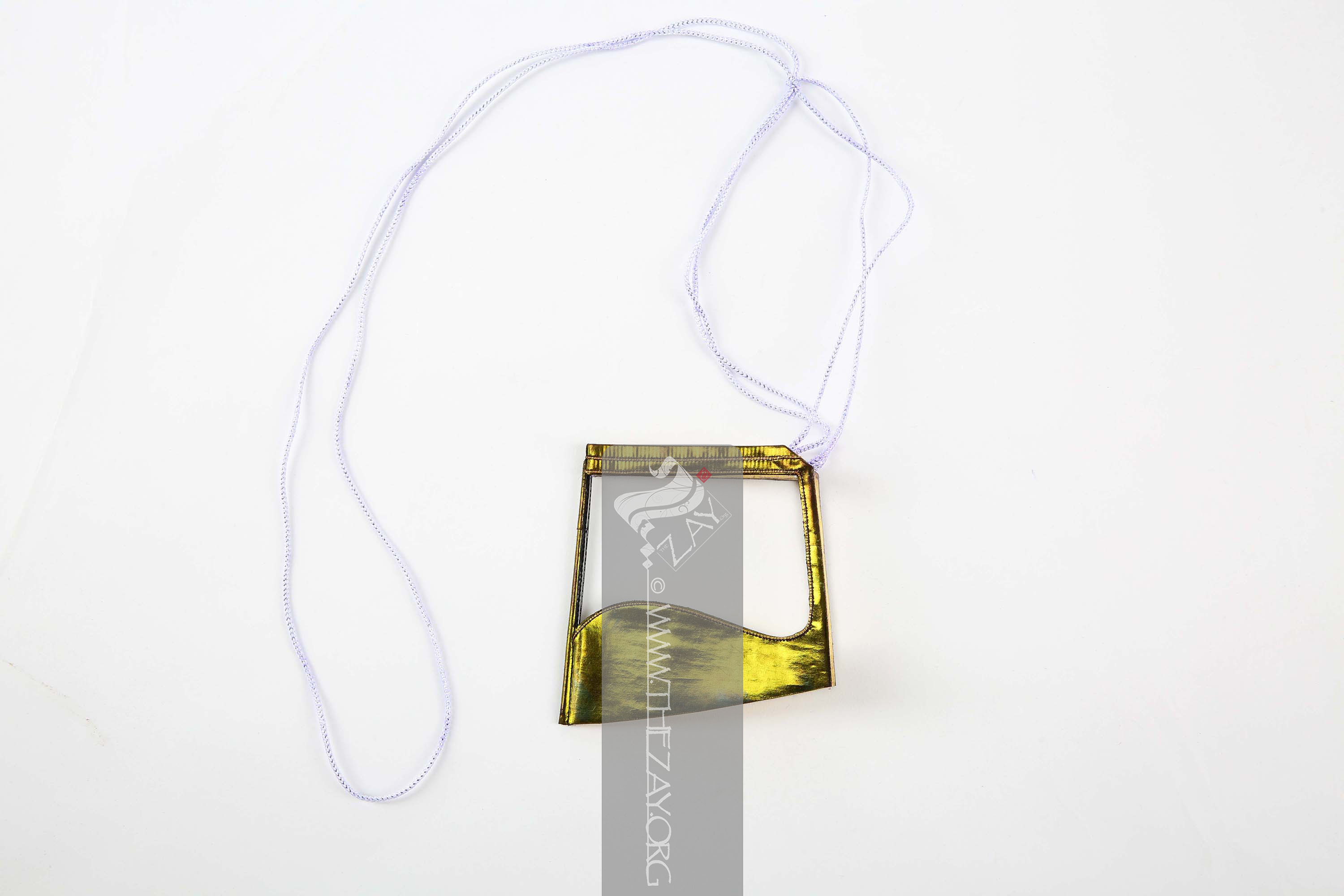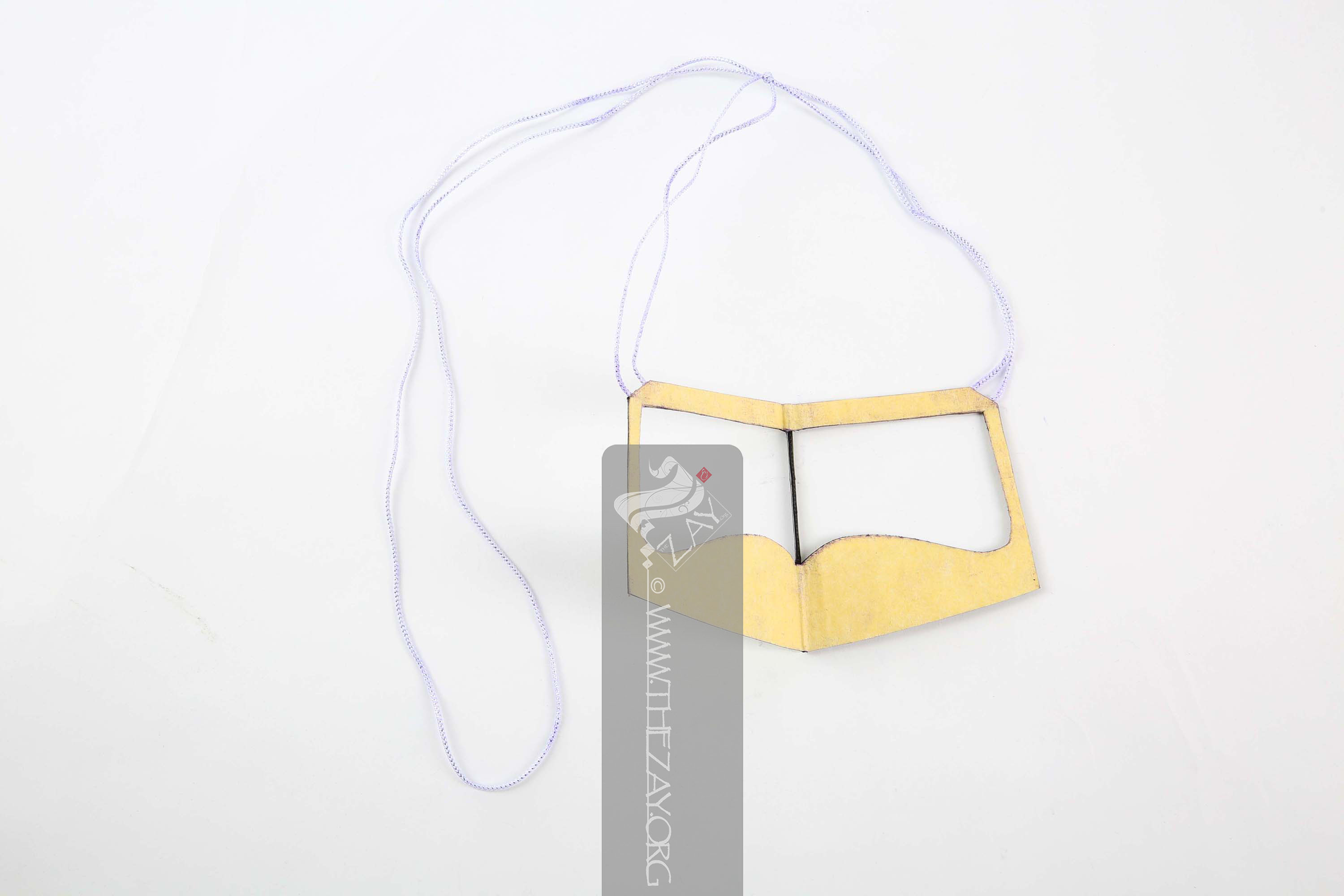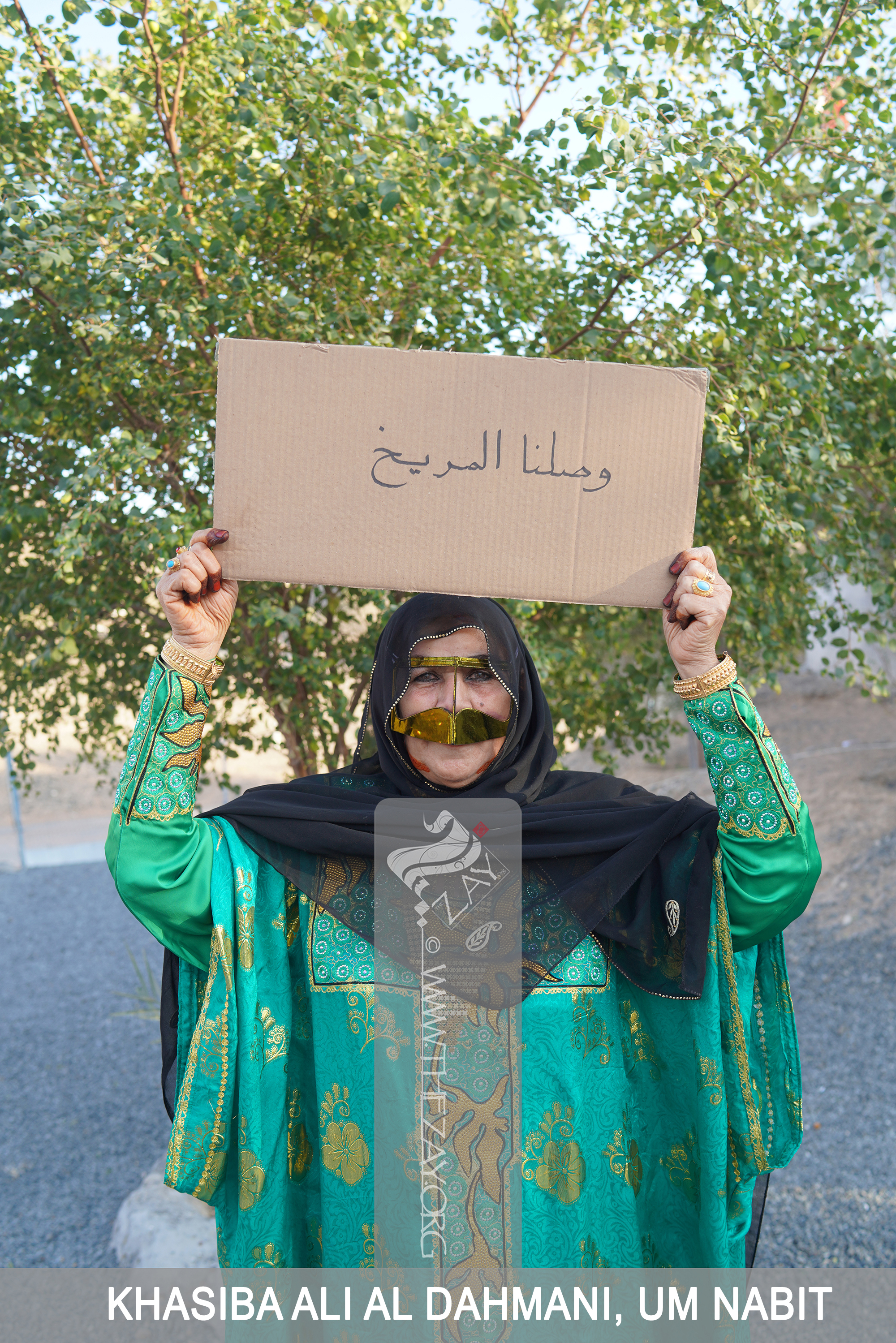Object NoteThis article is part of a whole outfit including a combination overgarment tunic (
thawb_kandurah
Thawb_kandūrah: (colloquial, UAE), post-1990s the (Thawb_wa_kandūrah) ensemble of the eighties evolved where the overgarment (thawb) and tunic (kandūrah) became united at the neckline creating one outfit and inner tunic receding to act as lining.) (
ZI2021.500903 UAE), cloak (
abayah
‘Abāyah: (Arabic: cloak, Pl. ‘abāyāt, or ‘Ibī. In Classical Arabic: ‘abā’ah, pl: ‘abā’āt, synonyms: ‘Abā, ‘abāh, ‘abāt, dafah
Daffah : (Arabic: side, synonyms: ‘Abā, ‘abāyah, ‘abāh, ‘abāt, bisht or mishlaḥ), long, wide, and sleeveless outer cloak worn in public by both sexes. In time this article of dress evolved and changed in shape, style, and function., bisht
Bisht: (Arabic: bjd or bjād: cloak, Akkadian: bishtu or Persian: back, pl. bshūt synonyms: ‘Abā,‘abāyah, ‘abāh, ‘abāt, dafah
Daffah : (Arabic: side, synonyms: ‘Abā, ‘abāyah, ‘abāh, ‘abāt, bisht or mishlaḥ), long, wide, and sleeveless outer cloak worn in public by both sexes. In time this article of dress evolved and changed in shape, style, and function., or mishlaḥ), long, wide, and sleeveless outer cloak worn in public by men. In time this article of dress evolved and changed in shape, style, and function., or mishlaḥ), long, wide, and sleeveless outer cloak worn in public by both sexes. In time this article of dress evolved and changed in shape, style, and function.) (
ZI2021.500903a UAE), veil (
shaylah
Shaylah: (Colloquial Gulf Arabic), a length of fabric used as shawl, head cover or veil. Also known as (wigāyah) or (milfa’), generally made from sheer fabrics such as tulle (tūr), cotton gauze (wasmah
Wasmah: (Arabic: woad), is derived from the woad herb (wasmah) used to dye the cotton gauze black. It is mainly used for headcovers or veils and overgarments in most of the Arab gulf region.) (nidwah) or (Nīl), or silk chiffon (sarī).) (
ZI2021.500903b UAE) and underpants (
sarwal
Ṣarwāl: (Farsi: shalvār; Synonym: salwar, shirwāl), trousers featuring tapering ankles and drawstring closure of Central Asian origin. They disseminated in the Indian subcontinent between c.1st-3rd century BCE. Although exact period of its arrival in the Arab world is disputed their widespread adoption is confirmed from the 12th century.
) (
ZI2021.500903d UAE)
Object History On the day the UAE mission to Mars was launched on 9th of February 2021,
Dr. Reem Tariq
Ṭariq: (Arabic; Synonym: tulle_bi_talli
Tūlle_bi_tallī: (French: Tulle – a city in France where fine material for veil was first made; Turkish: tel – wire; Synonym: tariq; talli; badla; khus_dozi ), series of small metal knots made on a woven net ground as embellishment. The term is commonly used in the North African Arab region specifically in Egypt.
; talli; badla; khus_dozi ), series of small metal knots made on a woven net ground as embellishment. The term is commonly used in the Levant Arab region specifically in Lebanon.
el Mutwalli
Dr. Reem Tariq
Ṭariq: (Arabic; Synonym: tulle_bi_talli
Tūlle_bi_tallī: (French: Tulle – a city in France where fine material for veil was first made; Turkish: tel – wire; Synonym: tariq; talli; badla; khus_dozi ), series of small metal knots made on a woven net ground as embellishment. The term is commonly used in the North African Arab region specifically in Egypt.
; talli; badla; khus_dozi ), series of small metal knots made on a woven net ground as embellishment. The term is commonly used in the Levant Arab region specifically in Lebanon.
el Mutwallī: Founder (CEO) of the Zay
Zay: (Arabic: costume, Pl. azyaā’), a set of clothes in a style typical of a particular country or historical period. Initiative, a public figure, speaker and author. An expert curator and consultant in Islamic art and architecture, interior design, historic costume, and UAE heritage. was surfing social media, an image of a woman carrying cardboard with a simple hand written message that read “we reached Mars” captured her attention.
She reached out to the account that posted the image. A young UAE photographer Alia Bent Sultan al Joker had been visiting her best friend’s farm on this festive day. As the whole country was glued to the media stations in excitement and anticipation of the coverage. The whole nation was firing the SM competing to post masses of congratulatory posts. In this herd-excitement, her friend’s mother agreed to pose for the photograph to eco her personal proud sentiments of the occasion, and the photograph was birthed.
Both ladies welcomed Dr. Reem’s suggestion to donate the image as well as the whole outfit portrayed in the image to the
Zay
Zay: (Arabic: costume, Pl. azyaā’), a set of clothes in a style typical of a particular country or historical period. Collection in commemoration of this monumental date. The image went viral and soon Khasibah became a public figure interviewed by press and media including Vogue Arabia, all wanting to photograph her to relive the moment.
Alia Bint Sultan Al Joker (
@alia_bent_sultan), born in Dubai, graduated with a BA in Integrated communication and marketing, Zayed University UAE (2003). Obtained her masters in Quality Management, Wollongong University, UAE (2009), and currently holds the position of Director of Family Development at the ministry of community development. Photography is her passion.
Khasibah Ali al Dhmani is registered to have been born on the 1st of July 1953. (Most birth dates occurring before the formation of the UAE in 1971, are surmised, as birth dates were not recorded. Hence everyone is generally listed as being born on the 1st of July, and the year it is calculated based on anecdotes of special events that corresponded to the year of birth, for example, the year when someone took power, or the year that faced an extreme heatwave, etc.)
She was married at the age of 14 and gave birth to 6 sons and 10 daughters. She never attended any formal schooling but managed to create a cottage industry making and selling traditional perfume and incense. She is very active and participates in different cultural weeks depicting local UAE heritage, and now has her own Instagram handle (
@khaseibah_).
Object Features The overall shape (
gardhah
Garḍah: (Arabic: qaraḍa: to bite), in the context of clothing in the UAE it means 'to shape' or 'form'. The (qaf) is pronounced as a (ga) in colloquial Arabic of the Gulf region.) of the face mask (
burgu
Burgu’: (Arabic: burqa’: mask, pl. barāqi’), a generic name given to one of many forms of face veils or masks, known as (niqāb). Stiffer versions made of indigo
Indigo: (Latin: Indigo – India, synonym: nil
Nīl: (Latin: indigo), Arabised term for Indigo, a natural dye belonging to the ‘Indigofera Tinctoria’ species of plants that have been cultivated in East Asia, Egypt, India, and Peru since antiquity. According to Pliny the Elder, it was named after India as it was the source of the dye.), a natural dye belonging to the ‘Indigofera Tinctoria’ species of plants that has been cultivated in East Asia, Egypt, India, and Peru since antiquity. According to Pliny the Elder, it was named after India as it was the source of the dye. -dyed cotton, are known as (batūlah) in Oman and Qatar. The (qāf) turns to (ga) in many Arab dialects.) follows the (
yasi
Yāsī: (Arabic: name), reference to (Yās) name of prominent UAE tribe, rulers of the Emirate of Abu Dhabi.) style, named after the
Yas
Yās: (Arabic: name), name of prominent UAE tribe, rulers of the Emirate of Abu Dhabi. tribe. The
indigo
Indigo: (Latin: Indigo – India, synonym: nil
Nīl: (Latin: indigo), Arabised term for Indigo, a natural dye belonging to the ‘Indigofera Tinctoria’ species of plants that have been cultivated in East Asia, Egypt, India, and Peru since antiquity. According to Pliny the Elder, it was named after India as it was the source of the dye.), a natural dye belonging to the ‘Indigofera Tinctoria’ species of plants that has been cultivated in East Asia, Egypt, India, and Peru since antiquity. According to Pliny the Elder, it was named after India as it was the source of the dye. -dyed, burqu fabric (
nil
Nīl: (Latin: indigo), Arabised term for Indigo, a natural dye belonging to the ‘Indigofera Tinctoria’ species of plants that have been cultivated in East Asia, Egypt, India, and Peru since antiquity. According to Pliny the Elder, it was named after India as it was the source of the dye.) is found in grades of bluish to purple, which is then rubbed and pounded to produce a metallic luster ranging from yellow to brown to reddish gold.
The
indigo
Indigo: (Latin: Indigo – India, synonym: nil
Nīl: (Latin: indigo), Arabised term for Indigo, a natural dye belonging to the ‘Indigofera Tinctoria’ species of plants that have been cultivated in East Asia, Egypt, India, and Peru since antiquity. According to Pliny the Elder, it was named after India as it was the source of the dye.), a natural dye belonging to the ‘Indigofera Tinctoria’ species of plants that has been cultivated in East Asia, Egypt, India, and Peru since antiquity. According to Pliny the Elder, it was named after India as it was the source of the dye. dye would stain the wearer’s face after repeated wear which meant a cloth lining, usually made from cotton, was inserted underneath the traditional face mask
burgu
Burgu’: (Arabic: burqa’: mask, pl. barāqi’), a generic name given to one of many forms of face veils or masks, known as (niqāb). Stiffer versions made of indigo
Indigo: (Latin: Indigo – India, synonym: nil
Nīl: (Latin: indigo), Arabised term for Indigo, a natural dye belonging to the ‘Indigofera Tinctoria’ species of plants that have been cultivated in East Asia, Egypt, India, and Peru since antiquity. According to Pliny the Elder, it was named after India as it was the source of the dye.), a natural dye belonging to the ‘Indigofera Tinctoria’ species of plants that has been cultivated in East Asia, Egypt, India, and Peru since antiquity. According to Pliny the Elder, it was named after India as it was the source of the dye. -dyed cotton, are known as (batūlah) in Oman and Qatar. The (qāf) turns to (ga) in many Arab dialects. to prevent this. By the 1980s the trend changed to using strips of masking tape (
lazig
lazig: (Arabic: laziq: glue), Colloquially in the UAE term refers to masking tape or clear acrylic sheets that are glued to the back of face masks (barāgi’) to help protect the face from getting stained by indigo dye, and help stiffen the fabric. The (qāf) turns to (ga) in many Arab dialects.), which were superseded at the turn of the century by clear transparent adhesive sheets, cut to shape, as can be seen in this example.
The mask
burgu
Burgu’: (Arabic: burqa’: mask, pl. barāqi’), a generic name given to one of many forms of face veils or masks, known as (niqāb). Stiffer versions made of indigo
Indigo: (Latin: Indigo – India, synonym: nil
Nīl: (Latin: indigo), Arabised term for Indigo, a natural dye belonging to the ‘Indigofera Tinctoria’ species of plants that have been cultivated in East Asia, Egypt, India, and Peru since antiquity. According to Pliny the Elder, it was named after India as it was the source of the dye.), a natural dye belonging to the ‘Indigofera Tinctoria’ species of plants that has been cultivated in East Asia, Egypt, India, and Peru since antiquity. According to Pliny the Elder, it was named after India as it was the source of the dye. -dyed cotton, are known as (batūlah) in Oman and Qatar. The (qāf) turns to (ga) in many Arab dialects. is fastened to the head using a braided silver metallic and white cotton cord known as (
shbuch
Shbūch: (Arabic: shabak: interlace), Colloquially in the UAE term refers to braided cotton or metallic cord used to fasten face mask (burgu’) to the head. The (kāf) turns to (cha) in local dialect.).




